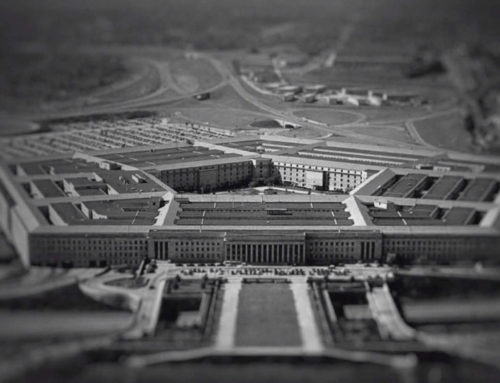The U.S. Department of Defense (DOD) is the largest federal agency in the United States, consuming more than half of discretionary spending in the U.S. budget. DOD purchases more than $1 billion of goods and services every day, accounting for two-thirds of all government purchases. And it employs some 3 million people globally, more than the world’s largest corporations.
These factors give DOD an outsize degree of influence on our budget and politics compared to other federal agencies. The defense dollars spread throughout the country in the form of military bases, corporate contractors and nuclear laboratories give lawmakers a strong incentive to add money to defense appropriations—the only “must pass” spending bill—for projects that will benefit their districts. And heavy reliance on the private sector for goods and services gives the defense industry a unique degree of political leverage, fueling the millions of dollars and thousands of lobbyists the industry deploys to influence Congress each year.
The unique function of national security means it often enjoys an exalted status when it comes to fiscal discipline. President Ronald Reagan said that “defense is not a budget issue: You spend what you spend.” But another former president, General Dwight D. Eisenhower, warned that “every arms dollar we spend above adequacy has a long-term weakening effect upon the nation and its security.” The present moment is crucial for rooting out unneeded arms dollars as the economic crisis and debt debates force a reappraisal of national security goals and needs.
Defense Asset Data Methodology
The Defense Assets Database is based on the Department of Defense 2012 Base Structure Report, a summary of DOD’s property inventory published by the Undersecretary of Defense for Installations and Environment. The Report uses a metric called Plant Replacement Value (PRV), which represents the cost to replace the “plant,” i.e. facilities and supporting infrastructure, using current construction costs and standards. To appear in the report, an installation must be larger than 10 acres and have a PRV greater than $10 million. Army National Guard State sites must be larger than five acres and have a PRV greater than $5 million.
The Base Structure Report is compiled at the end of each fiscal year, so constitutes a snapshot of DOD’s assets at that time. This means installations that are technically inactive due, for example, to closure by the Base Realignment And Closure Commission (BRAC) or sale to another organization, can still appear in the database until the legal and physical closure or transfer processes are complete. Similarly, personnel numbers are constantly changing, and figures represent an estimate based on military services personnel data collected by the report.
Related resource: Pentagon Contracting 101
Terms of Use
Because all of the data we offer is public information, we ask that all users agree to these basic terms of use, that:
- information provided by TCS in whatever form is meant for research, educational, or journalistic purposes only;
- TCS Data shall not be used for commercial purposes, to solicit contributions, or sold to third-parties;
- and that appropriate credit will be given to TCS for all reports, articles, mashups, or other use of our data, including a link back to our website for all items published on the web.











